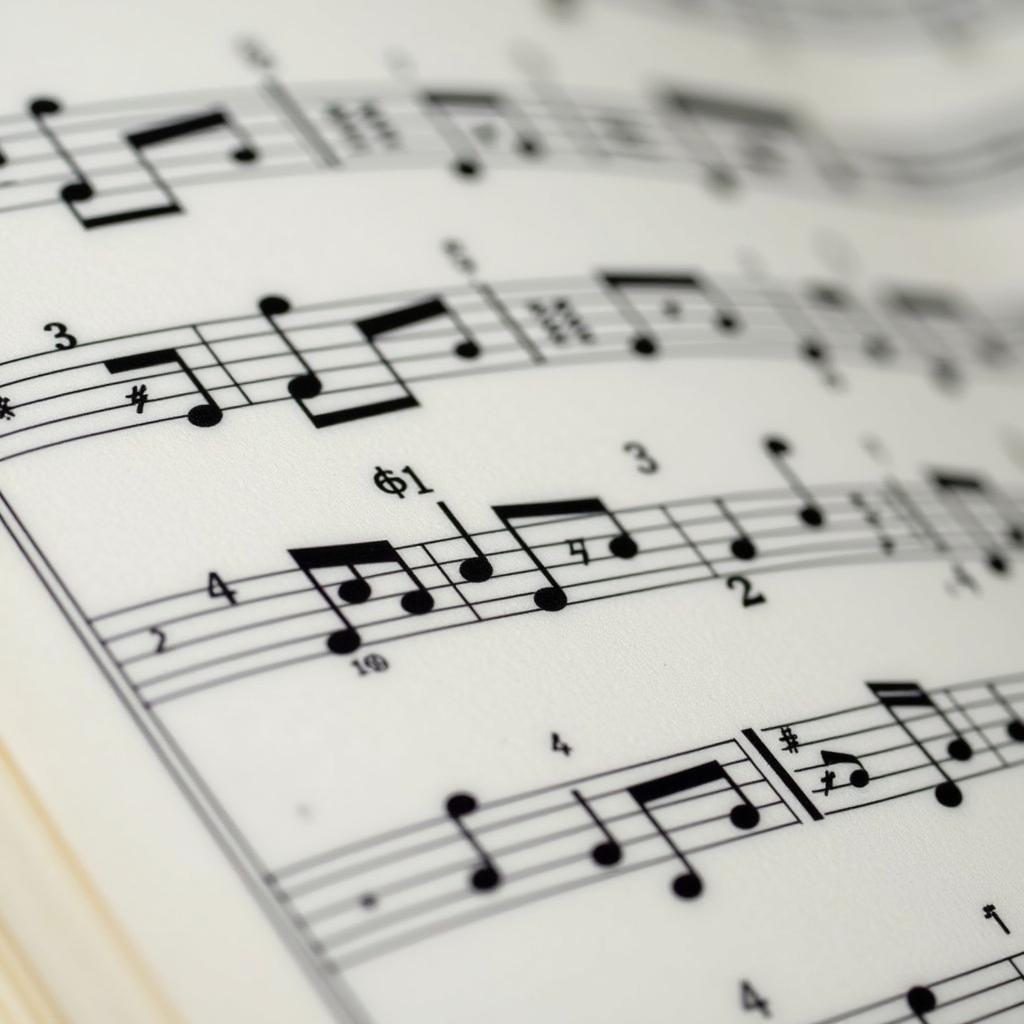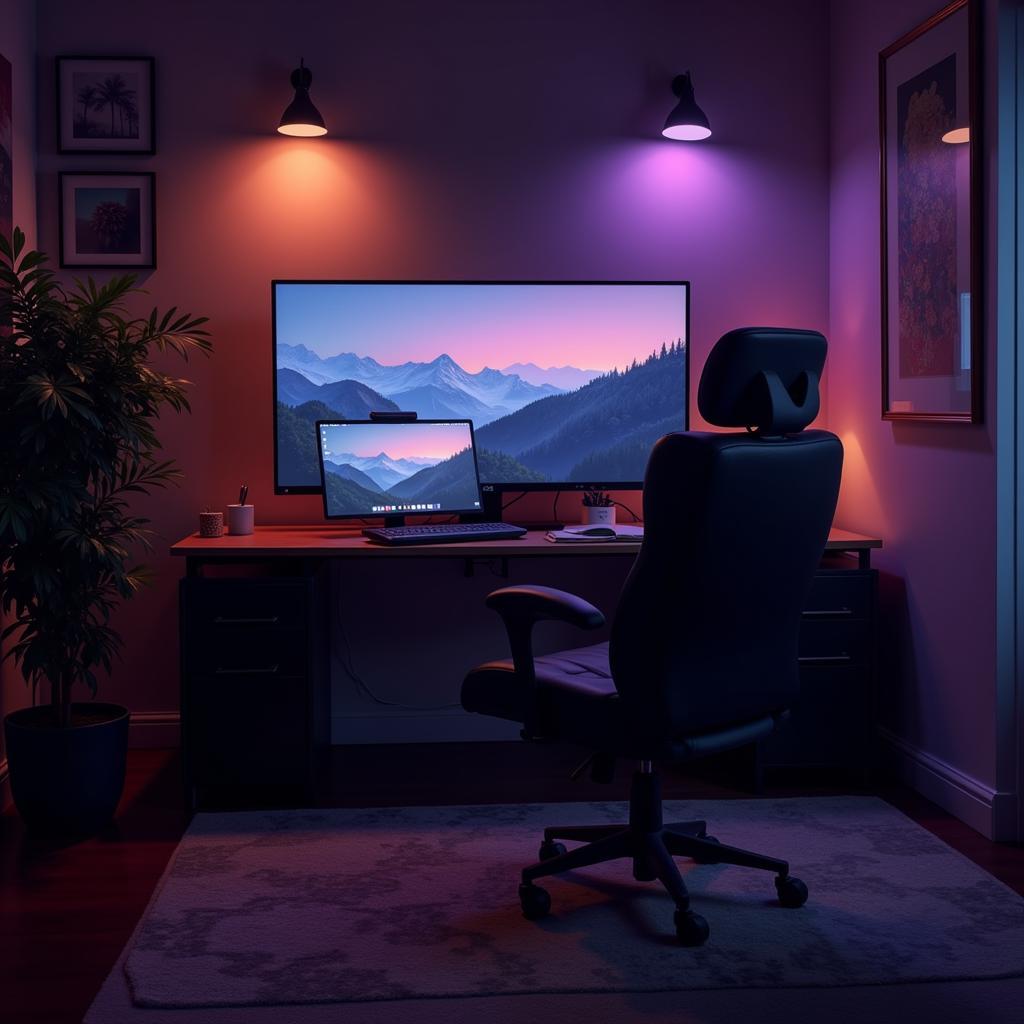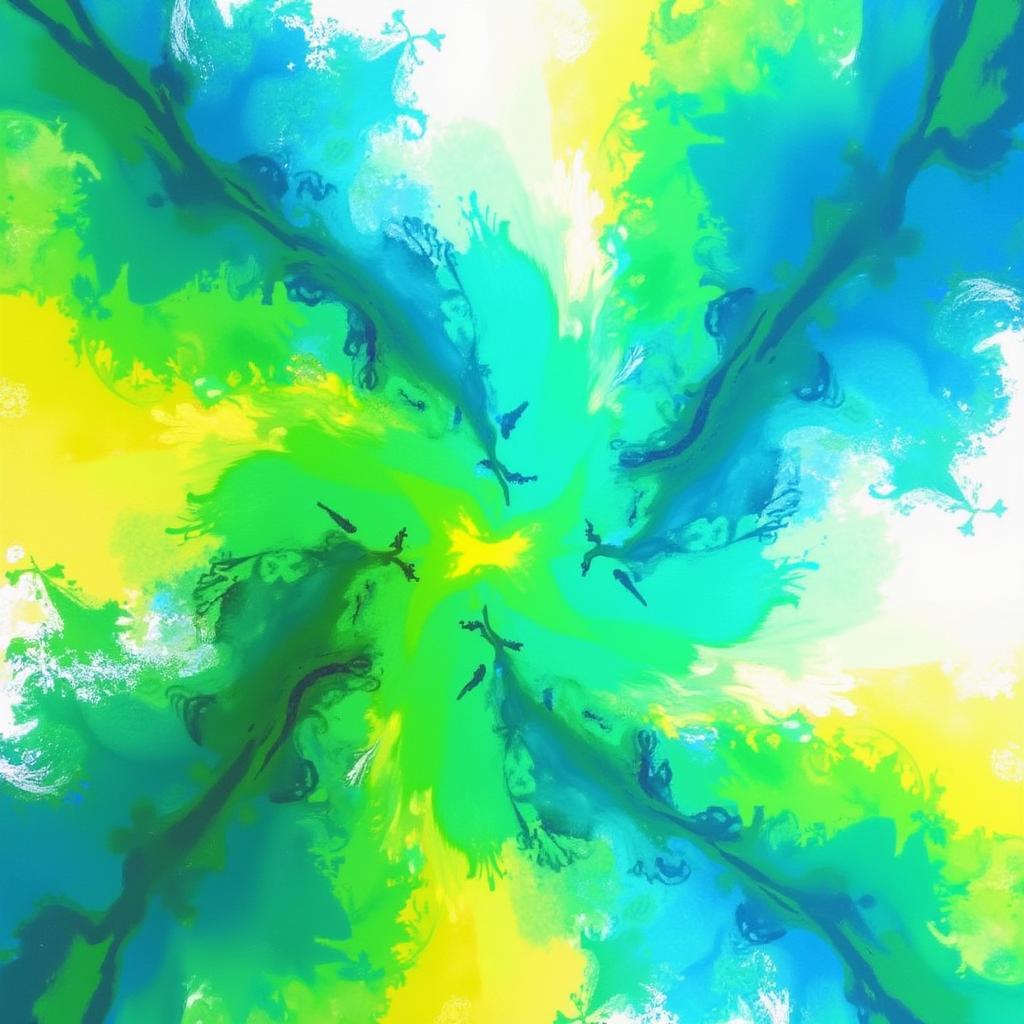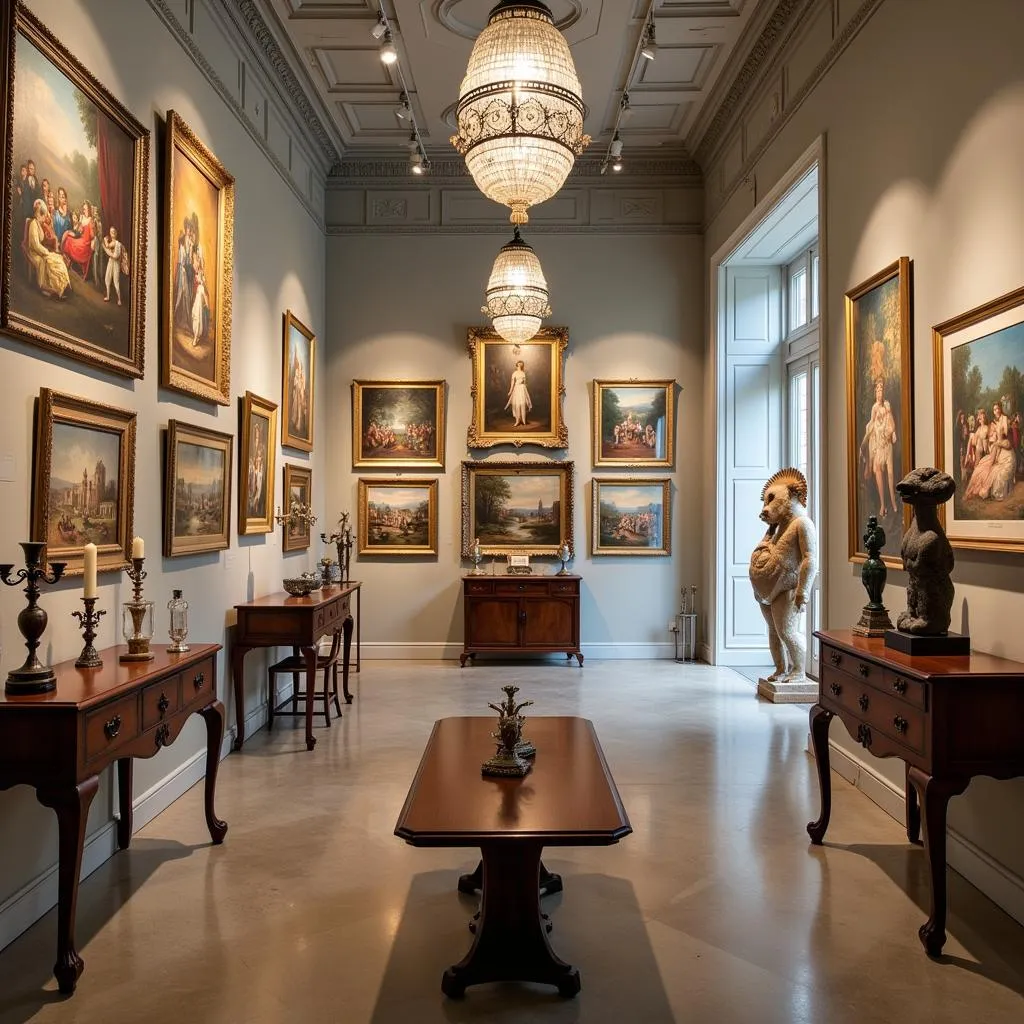Exploring the Power of Dissonant Art
Dissonant Art challenges our perceptions and evokes a complex range of emotions. It pushes boundaries and invites us to confront the unconventional, sparking dialogue and encouraging deeper understanding of the human experience. From visual arts to music and literature, dissonance plays a crucial role in shaping artistic expression and capturing the intricacies of the world around us. Let’s delve into the captivating world of dissonant art and explore its impact on our senses and emotions. art&sound
Understanding the Core of Dissonance in Art
Dissonance in art isn’t about creating chaos or unpleasantness. Instead, it’s about strategically using elements that clash, contradict, or create tension to achieve a specific artistic effect. This tension can be visual, auditory, or even conceptual, forcing the viewer or listener to actively engage with the work and grapple with its underlying meaning. Think of a painting with jarring color combinations, a musical piece with clashing notes, or a poem filled with paradoxical imagery. These are all examples of dissonance at play, creating a sense of unease, intrigue, and ultimately, a deeper connection with the art.
What makes dissonance so compelling is its ability to mirror the complexities of life itself. The world isn’t always harmonious; it’s full of contradictions, conflicts, and unresolved tensions. Dissonant art reflects these realities, offering a powerful lens through which we can examine our own experiences and the world around us.
 Dissonant Art: Visual Example
Dissonant Art: Visual Example
The Psychological Impact of Dissonant Art
Why do we react so strongly to dissonance? The answer lies in our inherent desire for order and harmony. When we encounter something dissonant, it disrupts our expectations and creates a sense of cognitive dissonance, a psychological discomfort that arises from holding conflicting beliefs or ideas. This discomfort, however, can be a catalyst for growth and understanding. By confronting dissonance in art, we are forced to question our assumptions, challenge our perspectives, and ultimately expand our understanding of ourselves and the world.
Dissonance in art can evoke a wide range of emotions, from anxiety and unease to fascination and intrigue. It can challenge our comfort zones and push us to explore new ways of thinking and feeling. It is this emotional power that makes dissonant art so impactful and memorable.
How Artists Use Dissonance to Convey Meaning
Artists utilize dissonance as a powerful tool to communicate complex ideas and emotions. By deliberately creating tension and conflict within their work, they can explore themes of societal unrest, personal struggles, and the inherent contradictions of human existence. Dissonance can also be used to highlight specific aspects of a work, drawing the viewer’s attention to particular details or themes. For example, a musician might use a dissonant chord to emphasize a particular lyric or emotion in a song.
 Dissonant Music Score Example
Dissonant Music Score Example
“Dissonance allows artists to move beyond simple representation and delve into the emotional and psychological depths of their subject matter,” says renowned art critic, Dr. Eleanor Vance. “It’s a way of capturing the raw, unfiltered experience of being human.”
Exploring Different Forms of Dissonant Art
Dissonance isn’t confined to a single artistic medium. It can be found across a wide range of art forms, including:
- Visual Arts: Through clashing colors, distorted figures, and unsettling compositions.
- Music: Through unconventional harmonies, jarring rhythms, and unexpected shifts in melody.
- Literature: Through paradoxical imagery, conflicting narratives, and unsettling themes.
- Film: Through jarring editing, unsettling sound design, and conflicting storylines.
Each medium offers unique opportunities for exploring and expressing dissonance, creating a rich and diverse tapestry of artistic experiences.
The Future of Dissonant Art
As technology continues to evolve, so too will the possibilities for creating and experiencing dissonant art. Virtual reality, augmented reality, and other immersive technologies offer new avenues for exploring the power of dissonance, allowing artists to create truly interactive and emotionally impactful experiences. The future of dissonant art is ripe with potential, promising to push the boundaries of artistic expression even further.
“The use of technology in dissonant art is opening up exciting new frontiers,” notes media artist, Alex Chen. “We are now able to create experiences that engage the viewer on a much deeper, more visceral level.”
Conclusion
Dissonant art, far from being merely unpleasant, is a powerful tool for exploring the complexities of human experience. It challenges us, provokes us, and ultimately enriches our understanding of ourselves and the world around us. By embracing dissonance, we open ourselves up to a deeper, more nuanced appreciation of art and its transformative power. So, next time you encounter a piece of art that makes you feel uneasy or uncomfortable, take a moment to explore that feeling. You might be surprised at what you discover.
FAQ
- What is the purpose of dissonance in art? To create tension and evoke complex emotions.
- How does dissonance differ from noise? Dissonance is intentional and purposeful, while noise is often unintentional and chaotic.
- Can dissonance be beautiful? Yes, the tension created by dissonance can be aesthetically pleasing and thought-provoking.
- What are some examples of dissonant art? Paintings by Francis Bacon, music by Arnold Schoenberg, and the writings of Franz Kafka.
- How can I learn to appreciate dissonant art? By exposing yourself to different forms of dissonant art and reflecting on your emotional responses.
- Is dissonance a modern concept? No, dissonance has been used in art for centuries, dating back to ancient Greek tragedies.
- What is the relationship between dissonance and harmony? They are two sides of the same coin, working together to create a dynamic and engaging artistic experience.
Have other questions? Explore more articles about art and sound.
Need support? Contact us at Phone Number: 02462573573, Email: danteum@gmail.com or visit us at Savico Megamall, 7-9 Đ. Nguyễn Văn Linh, Gia Thụy, Long Biên, Hà Nội 10000, Việt Nam. We have a 24/7 customer service team.




